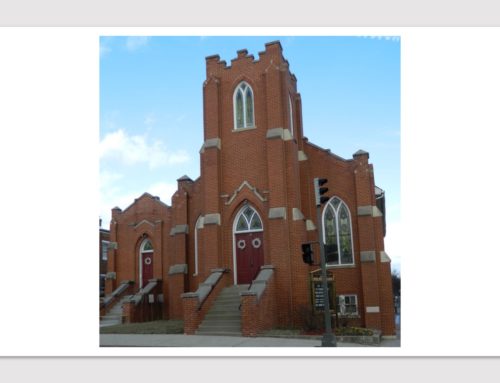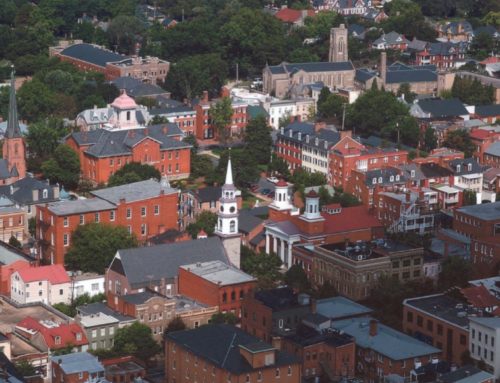Excerpt from Frederick News-Post:
The cold weather has finally moved in, and winter is just a few weeks away. Now is a great time to start thinking about preparing your historic property for winter. Fortunately, there are simple and cost-effective retrofits that homeowners can do themselves to improve energy efficiency and thermal performance without compromising a building’s historic character:
Add weather-stripping to doors and windows. Much of a building’s heat loss can occur because cold air from outside gets inside through loose windows, doors and cracks in the exterior of the building. Adding weather-stripping to doors and windows so that they seal tightly, caulking exterior trim, and repairing cracked glazing or putty around glass panels can substantially reduce the amount of air getting inside the building. Studies have shown that the energy efficiency of restored windows incorporating retrofit components such as weather-stripping can at least meet the efficiency of replacement units. Repairing windows also preserves the original appearance of the building and adds to the value of the property.
Insulate the attic. One major misconception among owners of historic homes is that the majority of heat loss occurs through the windows. Typically, no more than 25 percent of heat loss occurs through windows and doors. In fact, the vast majority of heat loss occurs through the attic. Adding insulation to accessible attic spaces can save energy. Insulation should be placed in different areas of the attic depending on whether the attic is heated or not, and homeowners should consult an expert regarding the proper type, amount, and location of insulation before undertaking such a project. It is also important to be aware of proper ventilation in the attic space, because lack of ventilation can cause insulation to retain moisture and lose its thermal effectiveness.
Insulating the basement and crawl space. In crawl spaces and unheated basements, insulation can be placed between the first floor joists with the vapor barrier facing up. In heated basements, insulation can begin within the first floor joists and down the wall to a point at least 3 feet below the exterior ground level, with the vapor barrier facing in. As with attics, one should ensure proper ventilation of unheated spaces and an expert should be consulted prior to undertaking an insulation project.
Install storm windows. Storm windows greatly improve a window’s thermal barrier and the amount of air infiltration. Storm windows that are tight-fitting and in good working condition should be retained. Storm windows should fit the corresponding opening entirely and be painted to match the underlying window or window trim. In the historic district, storm windows and doors require Historic Preservation Commission approval, but can be approved administratively provided they meet the guidelines. While interior storm windows can be thermally effective, they are generally not recommended for historic buildings because there is higher potential for damage to the window and sill from condensation.
With these simple tips, you can stay warm and cozy in your historic home this winter. Additionally, you could save even more money with the city of Frederick Historic Preservation Property Tax Credit, which equals 25 percent of eligible exterior expenditures if the property is in the Frederick Town Historic District or a city-designated individual landmark. If you have any questions about any of the improvements discussed here or questions about your specific property, feel free to contact the Planning Department at 301-600-1499 or www.cityoffrederick.com/preservation. And as always, send your questions and comments to PreservationMatters@cityoffrederick.com.



